|
|
Samsung's strategy on Dual SIM handsets
Samsung has recently unleashed its Samsung DuoS phone (Samsung D880) on the Russian market, which is in fact its first handset to deal with two SIM-cards simultaneously. This means, not only should there be two SIM card beds, but also two radio modules making for reception in two networks. The market hasn’t seen this breed of phone so far, saving for a handful of exotic Windows Mobile smartphones, first showcased at 3GSM Congress early in 2007. Nevertheless, these solutions make no difference in the world, for their quality, feature packs and simply consumer awareness are all marginal. The matter of price is not what it is all about in this case, that’s why these smart phones should by no means be reckoned among the Samsung DouS’s and the models to come competition. A massive advertising campaign for the Fly B700 Duo, which belongs to the same device type, kicked off early in October, however this model is slotted for early November, right when the Samsung DuoS arrives. And while the latter will go for twice as much, Fly’s solution aims at the mass-market, and for that it offers worse usability than the Samsung-branded device. Curiously, Samsung sorted out all trademark registration issues long ago, so that now it owns titles for phones that can have something to do with dual SIM-card layout. “Duo” is one of them. However, over at Samsung they think no competition will unfold between these two products, so they are not forcing Fly to rename its device. It is quite another matter, though, that Fly’s position is now vulnerable and should some unforeseen clashes occur, it is very unlikely to be able to protect the brand they have invested so much money in. But let’s look at the prerequisites for the arrival of dual SIM-card handsets.
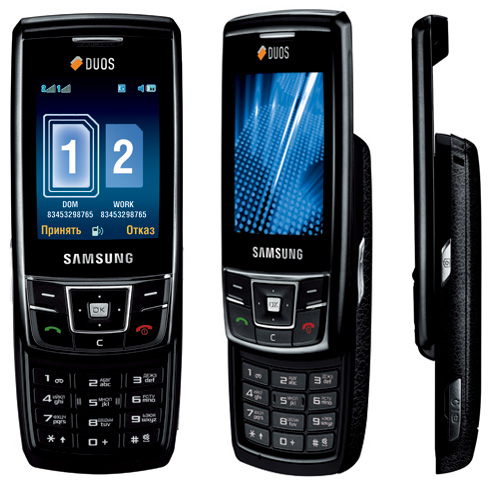
Background
The first device ever to feature the dual SIM functionality was the Benefon Twin released back in 2000, however it never made its way to consumers’ hearts. For Benefon it was a go at a potential market, more of an attempt to come up with an offbeat solution that would be demanded by the market. The Twin had two SIM card sockets and upon its startup the user was enabled to pick the card he was going to operate, while it was impossible to have both cards running at the same time. The company’s engineers, when asked whether it was possible to create a handset where two cards would operate hand to hand, held up their hands, claiming that it would be way too expensive, and the battery life of such device would be quite meagre.
Almost four years after that moment, late in 2003, the market saw the first dual-SIM-card adapters. However, they retailed for 10-20 USD and didn’t seem to be the best way to go. Furthermore, the necessity to cut a small piece out of a SIM-card, considering all these chances of damaging it, had to put my off. In fact that solution was quite primitive and unhandy, in other words, it was a do-it-yourself add-on to a phone. Nevertheless, our first write-up on these adapters was followed up by an avalanche of letters and feedback, and the sales clearly indicated that these adapters were all the rage at that time.
For most carriers, however, such solutions are the root of all evils, since any subscriber can make calls not only using his primary tariff, but also some cheaper plans. On the other hand, for carriers that have entered the market only recently and whose services are second-rate and SIM-cards are bought as a reserve, such solutions are vitally important. It is not a secret that back in 2004, in Russia it was Megafon that found itself in such a tough spot. The company bought up dual-SIM-card adapters and sold them almost for twice as less than the price established on the market back then.
The today’s market is completely different, however. A lot of people are now operating two handsets with different SIM-cards, for various reasons, or owning a bunch of SIM-cards with one or many handsets.
So, why would someone actually need several SIM-cards? The most apparent usage scenario is a corporate SIM-card, where all calls are paid by your employer, and a personal number. Another possible way to go – two personal SIM-cards, one of which registered to some John Smith (a very popular trick among businessmen trying to avoid being bugged). However, this measure isn’t of much a rescue especially against solid villains and loads of calls made via this card. It can work out for a few calls, but using it regularly renders these secret SIM-cards useless.
Starting from 2005, mobile Internet has been going to the masses and getting more affordable, that’s the reason why we can now employ special data-heavy tariffs, where calls are outrageously expensive. So that’s how come many have already geared up with secondary handsets doubling as GPRS/EDGE-modems. There are a lot of other ways to utilize two SIM cards, but after all it is not that crucial in the context of our today’s write-up.
The vast majority of people owning two and more SIM-cards reside in big cities, specifically in Moscow and St. Petersburg. The penetration level of mobile communication services is now reaching the 200 percent mark, whereas back in March, 2007 it settled down at around 160 percent. Obviously, such tremendous numbers result from deliberate inflation of subscriber bases, incorrect records of out-of-use SIM-cards etc. But, even that being said, many do employ a couple of SIM-cards, and the number of these people is quite large.
The pessimistic estimate of people owning two and more cards in Russia is 5 million users, while the top limit sits somewhat at 10-14 mln. Given a pretty high average phone price established over here, this chunk of the market gets much more desirable.
Most Russian and European carriers will oppose the arrival of similar products, for these phones smear all borderlines separating their plans and tariffs, so anyone could enjoy cheap data from one carrier and affordable voice calls from some other provider. And this will have an adverse effect on the ARPU level, which is something they really don’t want to happen. But whereas the European market is almost a hundred percent carrier-based, where phones are subsidized, the Russian market is one of the world’s biggest free markets with carriers having no activities of this kind. That’s why Samsung launches its DuoS in Russia and CIS in the first palce, while the second wave will target Asia. It may come that if this concept will prove successful, some European carriers will order such solutions as well, but for the time being, they don’t feel very good about them.
Samsung DuoS – more to come
The work on the details of a Dual SIM handset started late in 2006, it didn’t take long for first prototypes to emerge, and the company was intending to release the final version into the wild some time during the summer of 2007. However the handset codenamed “Pushkin”, that hinted at the handset’s destination, never showed up. The reason being that its software usability didn’t quite satisfy the developers and focus-groups, its ergonomics left much to be desired, so they had a lengthy wish list composed instead. These wishes, for the most part, have been implemented in the Samsung DuoS, so now it a pretty interesting solution ergonomics-wise, many aspects are very intuitive and running two SIM-cards simultaneously doesn’t look like a hassle.
Below the battery there are two SIM-card slots, and it doesn’t matter which one you use for a particular card, since you can pick the primary card from the phone’s menu, which is an important difference from other similar handsets, where everything depends on where you plugged your SIM-cards.

The hardware design isn’t what you have come to expect from a phone, reason being that two radio modules do make the difference. This way, there are two sets of antennas, which are located on the opposite ends of the device so as to negate possible distortions brought about by the owner’s hands. And this doesn’t necessarily mean the handset should be gigantic or have the biggest-in-class casing, by no means. As far as dimensions are concerned, the Samsung DuoS is a tad bulkier than average at 104x51x18.9 mm. But its size has much to do with the higher-capacity cell and the company’s desire to show how far it stands apart from the rest. In fact, there aren’t too many technical barriers here. There is one modem embedded into the handset – two would have made it more power hungry and steeper, which isn’t the best way to go at the moment.
How does it work? You turn it on and using the SIM-card manager give respective names to the SIM cards you have installed. This means you won’t end up puzzled about what cards does what in your particular case, like you probably used to with hard-wired SIM1 and SIM2 names in other solutions.
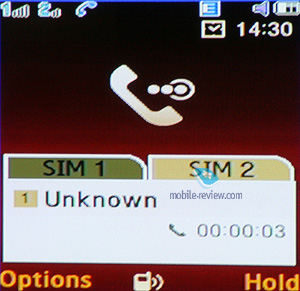
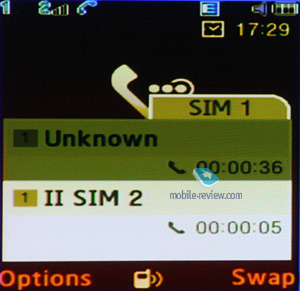
When at the standby screen, the display shows both carrier titles, where the numbers stand for the respective SIM-cards. While the signal strength indicator of the first cards sits on its usual place in the top left, the indicator for the second card has been moved to the right. Upon an incoming call the handset will show you which card is actually receiving this call. What is more, not only can the user pick ring tone for each card, profiles can also be customized for every SIM-card. For example, you leave the first card in the default mode, and set the Silent profile for the other one. A great option that is missing from the phones from other makers.

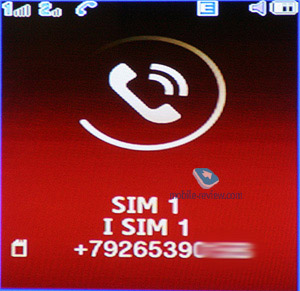


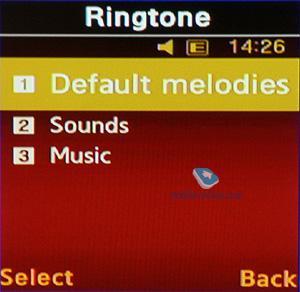


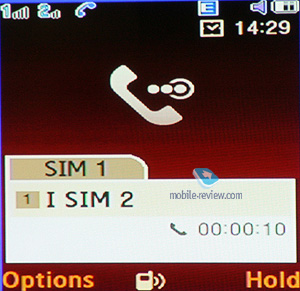
To outline the handset’s focus, the side plate houses a dedicated button for managing calls and starting up the SIM-manager. Not only does it bring up this application, but also when you are dialing a number or typing an SMS, it allows for one-touch access to either of the cards, so you can switch between the networks. Nevertheless, by default all menus feature the first cards’ icon, and right from the menu below you can easily toggle to the other SIM card, so there are two ways to get the same job done. Some might actually like the key best.
Other attractions of the DuoS include the ability to disable one of the cards from the menu. Some might think it is ridiculous, for this is actually the handset’s major trump. But when your battery is running out of power, this will never go amiss – with two cards online your handset burns twice as much power. All the stories that “it is only 1,3 times” don’t seem to be trustworthy, unless you, of course, will make almost no use of the second card. Some power is saved solely thanks to the lack of EDGE/GPRS on the second card and a couple of technical tricks.
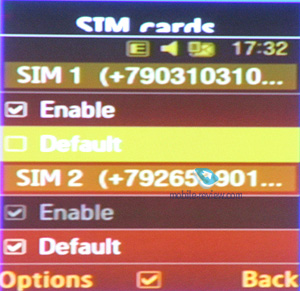
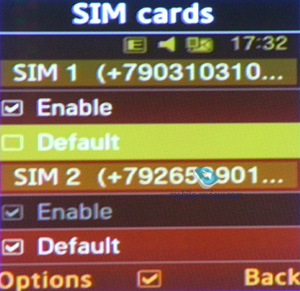
Basing on the phone’s hardware design, the two cards over here aren’t equal in rights. Since the DuoS utilizes only one modem, it may be used only by the SIM-card you’ve set as default. Want to enjoy GPRS/EDGE with the other one? Swap the SIMs in the menu, the handset will reboot, and here you go. There is a pitfall to it though, that you might want to know about. During a heavy data session, you won’t be able to receive calls with the other SIM-card. Which is a pity, since this automatically means this phone just won’t make it as a GPRS-modem and a handset for voice calls in one shell, even though this is a very common usage scenario for two SIM-cards. But the DuoS is inclined more towards voice traffic and SMS messaging.
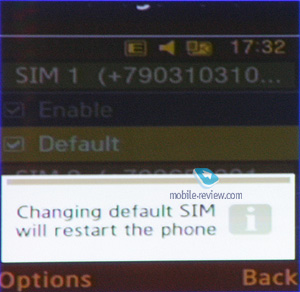
All call lists feature the SIM card that handled specific calls. The phonebook shows entries from the handset’s internal storage and both SIM-cards.
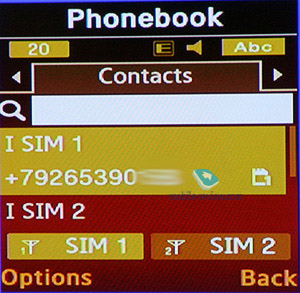


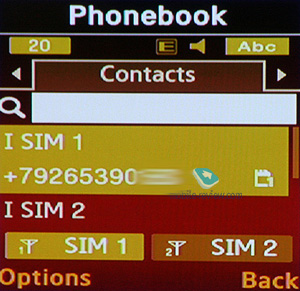
This solution is pretty well-balanced for those who are really into the two handsets setup. Functionality-wise no other dual SIM handset can offer the same level of comfort as the Samsung DuoS today, so the company has set another benchmark on the market.
Since there are two radio modules, the phone should come with two IMEI numbers, and it does, so no regulations or standards will be violated.
The rest of the DuoS suite of features is pretty much par for the course for Samsung’s latest-gen devices: music player, radio, 3 Mpix camera with autofocus. But apart from the two SIM cards setup there is nothing to shout about.
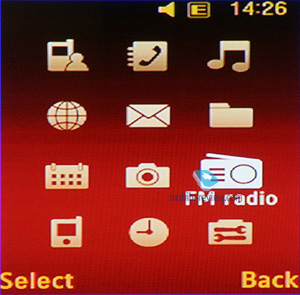
The Samsung DuoS hit the production line only recently, so it will start shipping in Russia late in October. Its estimated price makes around 720 USD, official sales will commence only in some CIS countries, no official supplies for Europe intended (even though there is a handful of European languages available with the default firmware).
What next?
It is not a fluke that Samsung has unleashed a steeper version of its Dual SIM handset in the first place – the plan is pretty simple, they cover the biggest share of the high-margin market they can, and then start moving down the pricing ladder. The “rival” in the form of the Fly B700 Duo hasn’t been given much credit. One of the company’s top managers said “there is no competition, we are headed in the same direction, and by popularizing such phones, Fly is playing right into our hands – there should be a number of manufacturers on the market”.
December will see a fashion-savvy device going by the name of the Samsung P720, which is an exact copy of the Samsung P520 (Armani), notable for its touch-sensitive display and modest dimensions. Compared to the Armani, the P720’s profile will be a little thicker, while all other dimensions will remain intact. It turns out this phone won’t be as elegant as its sibling, but some might fall for this as well.
The fate of other handsets and even whole line-ups is still in question – there are some phones for women scheduled for February, March, 2008, as well as a couple of mid-tier devices, where the most affordable solution will go for around 250 USD. But it all comes down the sales of the Samsung DuoS. And the distributors have faith in this phone – the number of pre-ordered units almost breaks the record at 30.000 phones only for one month of sales. There is no reason to believe the retailers won’t be able to sell out the entire supply. The DuoS will be Samsung’s prioritized solution for the fourth quarter of this year, so it will enjoy substantial investments into the ad campaign. Not only will the company place promo-teams in stores (these people will juggle with phones, drop them to show everyone how great it is to have one handset for two SIM-cards), they will also go for commercials and ads in the press. With this kind of backup, the sales of the DuoS won’t pass unnoticed, no doubt about that. And this means, that more models are to come, it is only a matter of time.
Eldar Murtazin (eldar@mobile-review.com)
Translated by Oleg Kononosov (oleg.kononosov@mobile-review.com)
Published — 18 October 2007
Have something to add?! Write us... eldar@mobile-review.com
|
News:
[ 31-07 16:21 ]Sir Jony Ive: Apple Isn't In It For The Money
[ 31-07 13:34 ]Video: Nokia Designer Interviews
[ 31-07 13:10 ]RIM To Layoff 3,000 More Employees
[ 30-07 20:59 ]Video: iPhone 5 Housing Shown Off
[ 30-07 19:12 ]Android Fortunes Decline In U.S.
[ 25-07 16:18 ]Why Apple Is Suing Samsung?
[ 25-07 15:53 ]A Few Choice Quotes About Apple ... By Samsung
[ 23-07 20:25 ]Russian iOS Hacker Calls It A Day
[ 23-07 17:40 ]Video: It's Still Not Out, But Galaxy Note 10.1 Gets An Ad
[ 19-07 19:10 ]Another Loss For Nokia: $1 Billion Down In Q2
[ 19-07 17:22 ]British Judge Orders Apple To Run Ads Saying Samsung Did Not Copy Them
[ 19-07 16:57 ]iPhone 5 To Feature Nano-SIM Cards
[ 18-07 14:20 ]What The iPad Could Have Looked Like ...
[ 18-07 13:25 ]App Store Hack Is Still Going Strong Despite Apple's Best Efforts
[ 13-07 12:34 ]Infographic: The (Hypothetical) Sale Of RIM
[ 13-07 11:10 ]Video: iPhone Hacker Makes In-App Purchases Free
[ 12-07 19:50 ]iPhone 5 Images Leak Again
[ 12-07 17:51 ]Android Takes 50%+ Of U.S. And Europe
[ 11-07 16:02 ]Apple Involved In 60% Of Patent Suits
[ 11-07 13:14 ]Video: Kindle Fire Gets A Jelly Bean
Subscribe
|



















